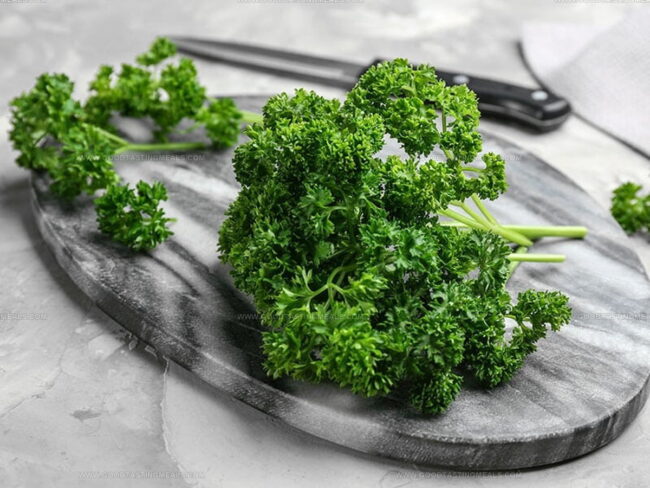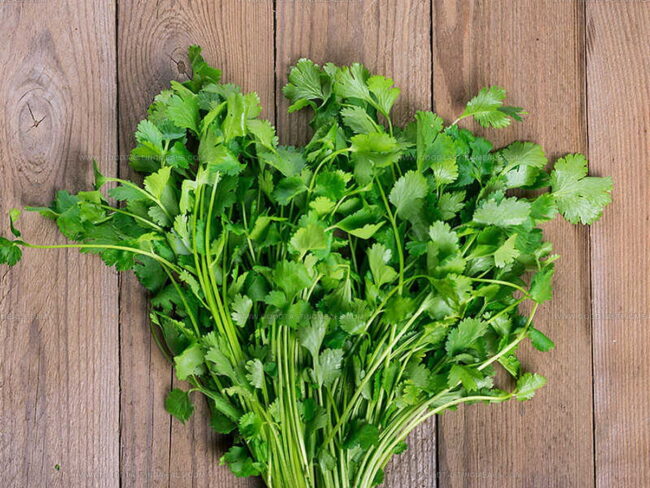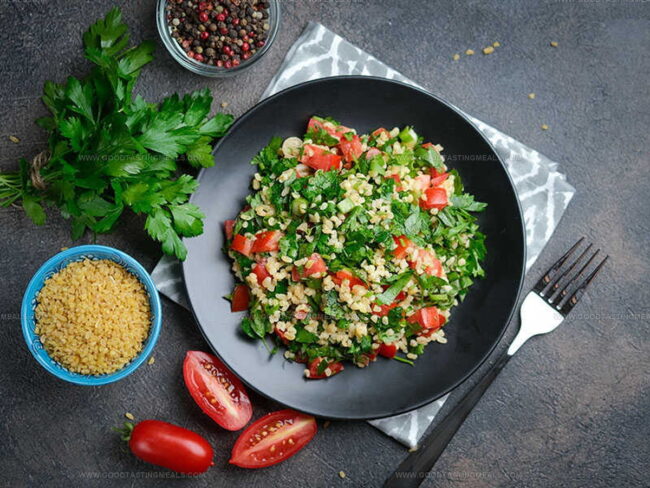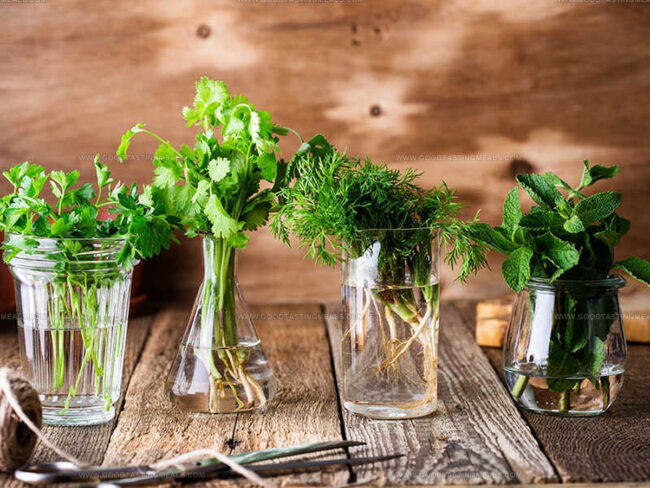Parsley or Cilantro: Know the Leafy Differences
Parsley vs. cilantro confusion happens even among passionate home cooks.
Leafy herbs share a similar appearance but create completely different flavor profiles in dishes worldwide.
Many people can spot the subtle visual clues - parsley has pointier leaves while cilantro edges look more rounded and delicate.
The aroma test provides the most reliable way to tell them apart since cilantro has that distinctive love-it-or-hate-it scent.
Some folks actually possess a genetic trait causing cilantro to taste like soap, making the distinction quite personal.
This herbal pair belongs to the same botanical family yet serves unique culinary purposes across global cuisines.
Whether for garnishing Italian pasta or finishing Mexican tacos, knowing these green cousins apart changes how you experience food flavors completely.
Overview of Parsley
Parsley is a widely used herb known for its fresh, mild flavor and bright green color. It’s a staple in many cuisines around the world, especially Mediterranean and Middle Eastern cooking.
Parsley comes in two main varieties: curly leaf and flat-leaf (also called Italian parsley), with the latter being preferred by chefs for its stronger flavor and easier chopping.
Both varieties share distinctive sharp serrations along their leaf edges.
Their color tends to be slightly brighter with yellowish undertones compared to cilantro leaves.
This versatile herb is often used as a garnish, flavor enhancer in soups, salads, sauces, and marinades, and even in herb blends like gremolata and tabbouleh.
Overview of Cilantro
Cilantro, also known as coriander leaves, is a vibrant herb widely used in many global cuisines, including Mexican, Indian, Middle Eastern, and Southeast Asian dishes. It has a bright, citrusy, and slightly peppery flavor that can add a fresh, zesty note to salads, salsas, curries, and garnishes.
Cilantro has a more distinctive aroma and taste that many find soapy due to genetic differences in taste perception. Cilantro leaves are delicate and typically added fresh at the end of cooking to preserve their flavor.
Spotting the Difference Between Parsley and Cilantro
Parsley and cilantro are two popular herbs that look quite similar but have distinct flavors and uses. Knowing how to tell them apart can elevate your cooking and help you choose the right herb for your dishes.
Here’s a table with details to spotting the difference between parsley and cilantro.
| Feature | Parsley | Cilantro |
| Scientific Name | Petroselinum crispum | Coriandrum sativum |
| Leaf Shape | Italian (flat leaves), Curly (ruffled) | Flat, rounded, lacy edges |
| Leaf Color | Bright green, slightly yellowish | Darker, deeper green |
| Aroma | Fresh, mild, grassy | Strong, citrusy, sometimes soapy |
| Flavor | Mildly peppery, slightly bitter, lemony | Bold, spicy, pungent, lemony |
| Culinary Uses | Garnish, salads, soups, stews, sauces, Italian & Middle Eastern dishes like tabbouleh | Used fresh in Mexican, Indian, Asian dishes (guacamole, salsas, chutneys, pho) |
| Cooking Tips | Can be cooked or raw; Italian parsley has stronger flavor | Best added fresh at end of cooking to preserve flavor; stems flavorful too |
| Health Benefits | Rich in myricetin (lowers blood sugar), folate (heart health), vitamins A, C, K, iron | Contains quercetin (anti-inflammatory), calcium (bones), potassium (heart), iron, vitamins A, C, detoxifiers for heavy metals |
Leaf Shape and Appearance
Parsley leaves come mainly in two forms: Italian (flat-leaf) and curly. Italian parsley has broad, flat leaves with sharply serrated edges, making it visually similar to cilantro. Curly parsley, meanwhile, features tightly ruffled, bright green leaves that add a decorative texture to dishes.
Cilantro leaves are flat as well but have more rounded, lacy edges with a delicate, almost feather-like structure. Cilantro’s leaves tend to be a deeper, richer green compared to parsley, which can appear slightly lighter or even yellowish.
Aroma and Flavor
The aroma and flavor profiles are where parsley and cilantro differ most distinctly. Parsley offers a fresh, grassy, and mildly herbal scent that’s subtle and pleasant.
When tasted, parsley presents a gentle peppery note, sometimes with a slight bitterness or a hint of lemon. Italian parsley tends to be more flavorful and pungent than its curly counterpart, which is milder and mostly used as a garnish.
Cilantro’s scent is much stronger and more polarizing. Its aroma is bright, citrusy, and somewhat pungent, but a portion of the population perceives cilantro’s smell as soapy or metallic.
This response is linked to genetics, specifically sensitivity to aldehydes present in cilantro that resemble chemicals used in soaps and detergents.
Overall, cilantro is bold, with spicy, tangy, and fresh citrus undertones that can easily dominate a dish.
Culinary Uses and Cooking Tips
Parsley is incredibly versatile and is widely used in a variety of dishes including salads, soups, stews, casseroles, sauces, and marinades.
Italian parsley, with its more robust flavor, is preferred for cooking, while curly parsley is often used as a decorative garnish to add visual appeal. Parsley can be cooked or added fresh, and its root is even edible though somewhat bitter, offering additional culinary applications.
Cilantro is most often used fresh to preserve its delicate flavor. It is a key ingredient in cuisines such as Mexican (salsas, guacamole, tacos), Indian (chutneys, curries), Vietnamese (pho), and Middle Eastern dishes.
Unlike parsley, cilantro loses much of its distinctive flavor when cooked for long periods, so it’s typically added at the end of cooking or used raw as a garnish. The stems are also flavorful and commonly used in recipes for an extra burst of herbaceousness.
Nutritional and Health Benefits
Parsley is packed with myricetin, a flavonoid known to help regulate blood sugar levels, and folate (vitamin B9), which supports heart health and cellular function. It also contains iron, vitamins A, C, and especially high levels of vitamin K, which is crucial for blood clotting and may have anti-cancer properties.
Cilantro shares many nutritional qualities, including vitamins A, C, iron, and also supplies calcium and potassium for bone health and cardiovascular support. One unique benefit of cilantro is its detoxifying properties; it contains compounds that help remove heavy metals like mercury and lead from the body.
Can I Swap Parsley for Cilantro (Or Vice Versa)?
Replaing parsley for cilantro (and vice versa) depends on the situation; here’s the explanation:
Using Cilantro Instead Of Parsley
Cilantro has a very strong, unique flavor and works best in certain types of dishes, like Southeast Asian or Mexican recipes. If you swap cilantro for parsley in other recipes, it will change the taste quite a bit.
So, think carefully before making the switch. However, using cilantro as a garnish instead of parsley is usually fine; just use a small amount so it doesn’t overpower your dish.
Using Parsley As An Alternative For Cilantro
Parsley has a milder flavor, so it can often replace cilantro more easily. To copy cilantro’s bright, citrusy taste, try adding a few drops of lemon or lime juice to parsley.
If parsley tastes a bit bitter, a little honey or sugar can help balance it out. Mixing in herbs like oregano or basil with parsley can also bring it closer to cilantro’s flavor. If you’re just using herbs for decoration, parsley is a simple and safe substitute for cilantro.
Easy Storage Tips for Parsley and Cilantro
Proper storage is key to keeping parsley and cilantro fresh and flavorful for longer. These simple tips will help you preserve their vibrant color and crisp texture.
Got Questions? We’ve Got Solutions
1. Can parsley and cilantro be substituted for each other in recipes?
While technically possible, it's not recommended. Parsley has a mild, fresh flavor, while cilantro has a strong, citrusy taste that some find soapy. Substituting can significantly change your dish's flavor profile.
2. How do I store parsley and cilantro to keep them fresh longer?
Trim the stems and place them in a glass with an inch of water, like flowers. Cover loosely with a plastic bag and refrigerate. Change the water every few days. Alternatively, wrap them in damp paper towels and store in a plastic bag in the refrigerator.
3. Are there any health benefits to eating parsley and cilantro?
Both herbs are rich in vitamins A, C, and K. Parsley contains more folate and vitamin K, while cilantro has antibacterial properties and may help with digestion. Both are low in calories and add nutrition to meals.
4. How can I tell parsley and cilantro apart at the grocery store?
Look at the leaves; parsley has pointed serrated leaves while cilantro's are more rounded with uneven lobes. The simplest test is smell: parsley has a mild grassy scent, while cilantro has a strong, distinctive aroma that's immediately recognizable.






